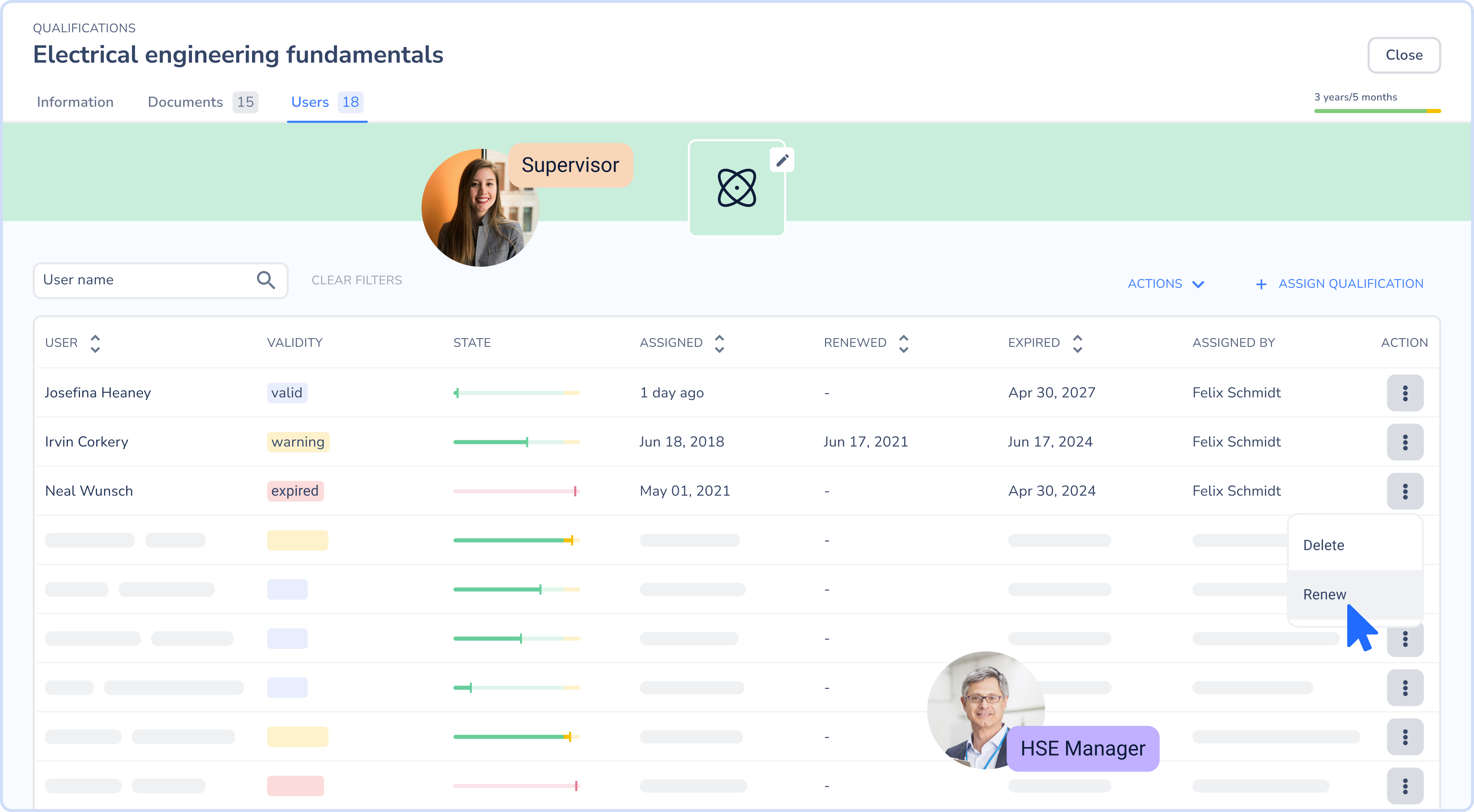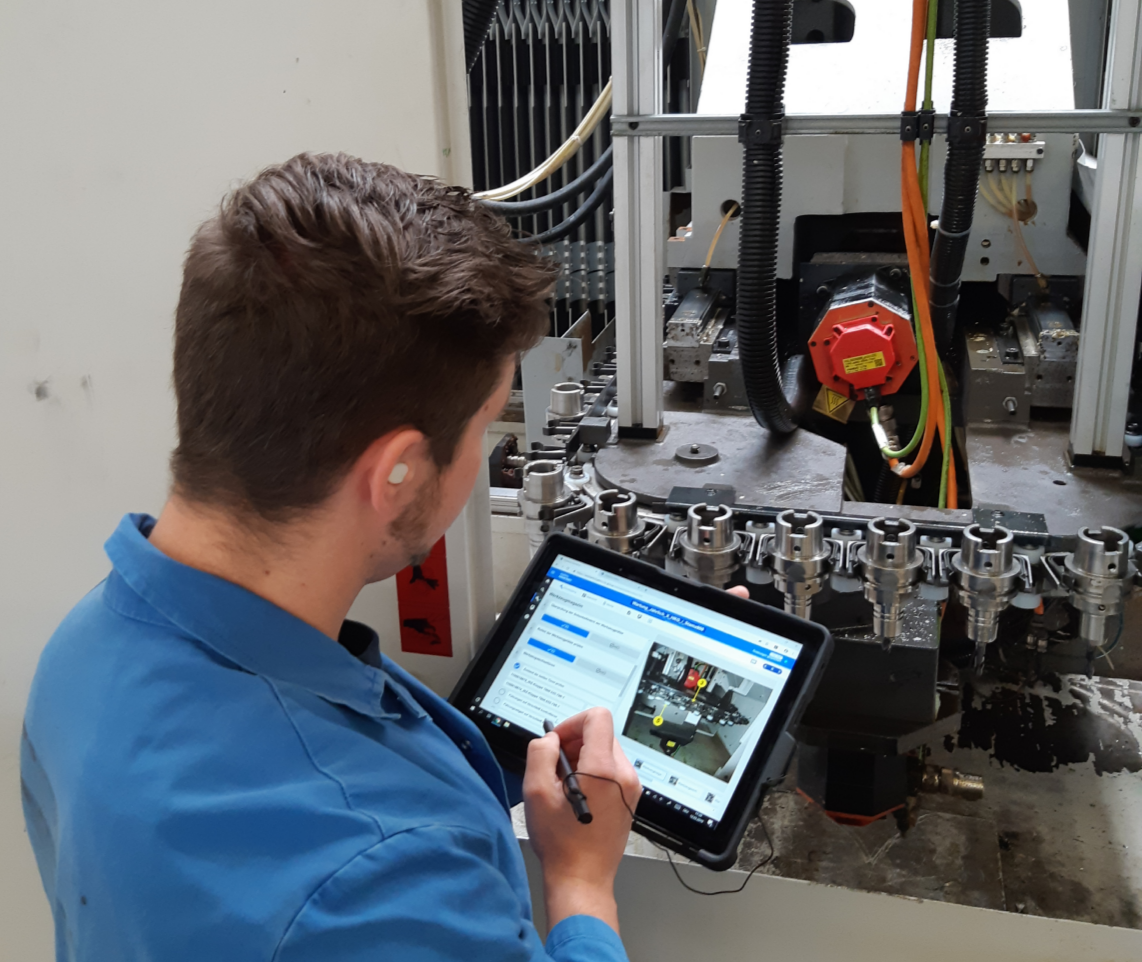"Successful change management involves everyone": Interview with Rafael Koch from Operations1
When it comes to change management, many people react with resistance and fear of change. Yet change management is often the key to a company's success and satisfied employees. As Head of Customer Success at Operations1, Rafael Koch has been involved in many change management processes. In this interview, he reveals the secret of successful change management and why it is so important to involve employees.

What the interview is about
Rafael Koch is Head of Customer Success at Operations1. Together with his team, he introduces Operations1 software to customers and has successfully supported many change processes. In this interview, he explains how change management can be implemented to the satisfaction of all stakeholders involved and why communication and empowerment are crucial success factors.
When is the right time?
Rafael, what does change management mean and why is it so important?
"Change management" is the systematic adaptation of a company to changing circumstances. It is so important because it helps companies adapt to changes that are beyond their control through a series of methods and processes. In this way, companies can reduce the internal resistance that often arises during transformations.
When is the latest time a company should initiate a change management process?
That depends on various factors, depending on what a company specifically wants to change. A good time for change management is as soon as a significant change in structures, processes or technologies is to take place within the company - for example, a restructuring of a department, a new corporate strategy or the introduction of a new technology. It is important that the process is initiated as early as possible.
For which companies or which change concerns is change management particularly suitable?
There are no restrictions or specifications to certain areas, industries or company sizes here. The great thing about change management is that it is a universal tool for really any company that wants to implement the changes just mentioned in their business operations.

Change management stages
Which phases does a change management process typically comprise and what is relevant in each phase?
There are many different frameworks for implementing a change management process. Well-known models include Lewin's model, McKinsey's model, Kübler-Ross' model and the psychotherapist Virginia Satir's model. What all these frameworks have in common is that they are based on different phases that usually accompany a far-reaching change, such as shock, resistance, fear, denial, etc. At the end of a successful change management process, there is always acceptance of the new, which can then be integrated into one's own personality and environment in a value-creating way. Since a change management process is often a project with such a clearly defined outcome, I recommend to our clients the phase model of traditional project management. It distinguishes 5 phases:
1. analysis and initiation: This involves taking stock and determining the current state with regard to whether a process or activity needs to be changed.
2. planning: The second step focuses on the development of a change concept and the creation of a corresponding plan.
3. implementation: In this phase, the change concept is implemented and the change plan is put into practice.
4. Control: This phase is used to monitor the change process and ensure that deviations are identified.
5. closure: In the final phase, the change process is evaluated in retrospect, the new processes and systems are monitored, and a final report is prepared.
Even in this traditional model, there is what is known as a "change request" to account for changes. For change requests where the outcome is not completely clear, it can help to use an agile model or a hybrid model. This way, changes can be implemented in small increments and controlled afterwards. Working fully agile in sprints using SCRUM, for example, is a helpful approach especially when there are many uncertainties in the new environment. Consequently, the goal and the environment dictate the tactics for success.
From which department should the change management initiative come?
Clearly from the management team. Good change management starts with a clear vision from the leadership circle of how the company wants to develop in the future. If those in charge are committed to this, they create an environment in which employees can prepare themselves internally for the upcoming changes.
Appreciation and cooperation
How can change management succeed in integrating all the business units involved into the change process in a way that creates value?
The first step is to select a change management team or a change management representative who will be responsible for implementing the change process. If this is an entire team, it consists of people from all the company departments involved. It helps the departments involved to implement the upcoming changes by creating schedules, providing resources and monitoring progress. Regular feedback loops between the departments and the change management team are particularly important, because this is the only way to ensure that the jointly decided changes can be implemented successfully. In addition to these formal aspects, an appreciative and cooperative attitude on the part of all team members is immensely helpful.
Why do some people react to change management processes with feelings of resistance, resentment, apprehension, etc.?
This has to do with the fact that change management processes introduce a change, a kind of farewell to the old and familiar, which offers security. This can then lead to negative feelings among some of those involved, which are related to the fear of the unknown. Ultimately, this is human and also normal to a certain extent, and each of us has certainly personally been in a completely new situation that appeared uncontrollable and to which we then reacted with defense mechanisms. In change processes in companies, such feelings can be triggered especially when employees feel threatened or caught off guard by the new and have not been given enough information or time to understand the changes.

The right attitude of expectation
What strategy has proven successful when individual departments or employees are resistant to the change request?
Successful change management involves everyone. Because those who can understand the need for change, see its opportunities but also the associated risks, can normally also accept a change. Such involvement can take the form of workshops or training sessions, for example. It is important to address and take seriously any concerns and doubts, but also all ideas and opinions of the employees and thus to involve them actively in the change process. It is also helpful to involve those employees who have a strong and positive influence on their colleagues, which is, after all, independent of their position in the company. After all, these people usually act as role models and, like influencers, influence their environment with their viewpoint and behavior.
How long does a change management process typically take?
That depends greatly on the complexity and scope of the change process. As a rule, however, you can assume a time span of at least a few months, and in some cases even up to several years.
What is a realistic expectation of the results of a change management process?
It is important not to assume that the initiated change processes will immediately deliver visible results. Good change management is sustainable and therefore it takes time for the expected results to show.
What else is needed
Final question: In your experience, which 3 factors are crucial for successful change management?
For change management to be sustainably successful, 3 factors are essential:
1. Skills: Those involved in a change management process should have certain skills in order for the change to succeed. In addition to technical and organizational knowledge, these include soft skills such as communication skills, stakeholder management, patience and leadership. Of course, these skills do not have to be concentrated in a single person.
2. Empowerment: Change management is quite demanding, not only because of the upcoming change as such, but also because of the time aspect. It is therefore important that the stakeholders involved have access to the above-mentioned resources during the process. If they do not, delays, frustration and mistakes will result.
3. Trust: Because this is the basis for getting involved in the change internally in the first place and then being able to pull it off successfully externally.
Rafael, thank you very much for the detailed explanations and the exciting insights!
Markus Glotzbach
During his professional career, Markus gained deep insights at companies and large groups in different industries and knows the digitalization hurdles and problems on the shopfloor. Before joining Operations1, he studied International Management (MA) and worked in the Cloud Computing as well as SaaS telematics sector.




